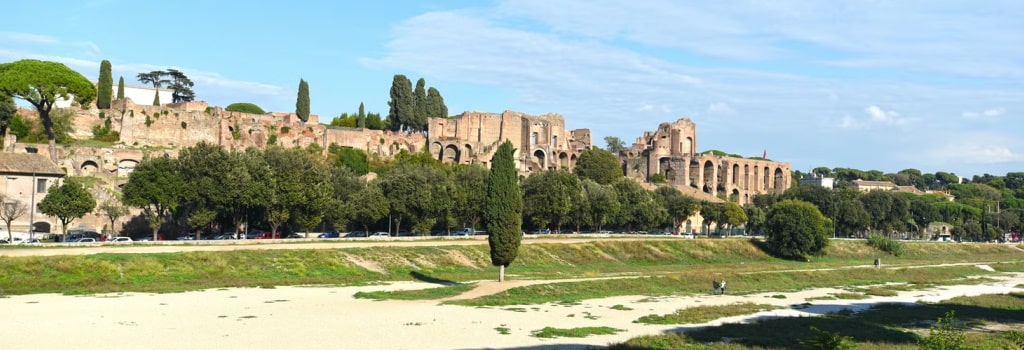

There's enough energy and power behind certain stadiums that they have become notorious. In the world of football, these locations include Anfield, Camp Nou, and San Siro, to name a few. These examples see the stadium become a competitor in itself by channeling a crowd's energy to create a palpable hype.
A change of venue can even mark the end of an era, as was the case with grounds like Arsenal's Highbury and Stoke City's The Victoria Ground, which only recently were destroyed for newer options to emerge. These moves tend to be controversial, as a team's spirit is closely tied to its home field.
The idea of a home-field taking on a larger-than-life personality is nothing new. In fact, football's greatest stadiums have their roots in the ancient pursuits of the Romans and Greeks, who organized the first massive spectator sports via hippodromes, amphitheaters, and circuses.
Though the Colosseum takes the limelight, few projects remain as notorious as Ancient Rome's Circus Maximus from an infrastructural perspective. The project was Rome's first major stadium which influenced every project that came after with features like track-side seating.
Architecture aside, the Circus Maximus has another tie to modern football. Today, the Premier League and La Liga are some of the most popular betting markets in the world. Back in the day, the Circus Maximus was also a place where bets could be wagered on horseraces, gladiator fights, and more.
In fact, the earliest origins of gambling include the first iterations of sportsbooks from Ancient Rome placed outside locations like the Circus Maximus. Today, sports betting remains an incredibly popular aspect of global sporting culture. As the world's top sport, football accounts for the most wagers worldwide but, back in the day, the number one sport was chariot racing.
As mentioned above, horse-drawn chariot races were some of the biggest events hosted at the Circus Maximus. The first developments began around 167BC and featured little more than a dusty raceway.
By the end of Rome's dominance, the Circus Maximus would host 150,000 spectators for major events year-round and included a raised grandstand for viewing. For comparison's sake, Camp Nou holds just over 99,000 spectators. The world's largest stadium, Narendar Modi Stadium in Gujarat, holds only 132,000.
This period began to frame the importance of spectatorship. The Roman circus is much like the Greek hippodrome, which is a location specifically for horseracing. However, the original purpose of the Circus Maximus helped build what would become the standard for the Roman amphitheater.
The Colosseum is an amphitheater structure, which further developed what a 'stadium' should look like from a fan perspective. Rather than horseraces, an amphitheater would host theatrical, sporting, and other events. It also introduced tiers, which made aspects like ticketing and navigation a breeze—even if the Colosseum only held around 80,000 compared to the Circus Maximus's 150,000.
Today, the modern football stadium more closely resembles an amphitheater than a circus as seating is arranged in a vertical style to make viewing better for all audience members. The field size is shrunk to facilitate this process, unlike the long course of the Circus Maximus (which resembles a modern racetrack).
However, the Circus Maximus was ground zero for figuring out what matters most for a quality viewing experience. The point was entertainment and identity. At certain points in its history, the Circus Maximus included spoils from Roman conquests, such as obelisks from Egypt and wild animals from across the Roman Empire.
Today, the same can be said for football stadiums in Europe, which tend to be destinations in their own right. Places like Manchester United's Old Trafford and Real Madrid's Bernabeu—even the new Emirates Stadium—make an effort to imbue the stadium with team identity. Trophies are on display along with retired numbers and signed memorabilia. And, like the Roman Circus, people will travel great distances for the chance to watch the action unfold live before them.
All good things have to come to an end, and the same unfortunately has to be said for football stadiums too. This article looks at the grounds which are soon to host their last match, the stadiums whose days are numbered and where fans will be watching their football from next.
The 91 biggest football stadiums in Europe. From Manchester to Munich, Villa Park to Valencia - each one with a capacity over 40,000
23 interesting things to do to pass the time until the football season restarts
My daughter's first ever football match - Orlando City v Atlanta United, August 2019. Written for Izzy to read when she gets old enough. Vamos Orlando
